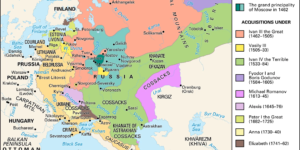Climate Change Intensifies Inequality: An Interview With Gregor Semieniuk
No Comments yetThis is part of PERI’s economist interview series, hosted by C.J. Polychroniou.
C.J. Polychroniou: You studied International Relations in Germany, at the Technische Universität Dresden, but ended up pursuing graduate studies in economics in the USA. What drew you into the “dismal science?”
Gregor Semieniuk: In Dresden, the program’s content spanned economics, public law and political science. What intrigued me about economics was that on the one hand it seemed necessary to grapple with the most intractable global issues of the time: for instance, why it was so difficult to increase most countries’ material affluence, how renewable energy could quickly replace the existing energy supply, and of course how the 2007-08 financial crisis and ensuing economic turmoil could be explained. On the other, my economics classes tended to provide straightforward answers to questions that were obviously more multi-faceted, like that a minimum wage was (categorically) to be discouraged because it diminished welfare. From my political science classes I knew that it was good practice to seek out contending theories to analyze the same problem through different lenses so as to gain a deeper understanding. I wanted to learn about contending theories also in economics, but there seemed to be only one theory, so-called neoclassical economics, and its strengths and weaknesses weren’t explicitly discussed. My search for a program that satisfied my curiosity led me to look to the USA, and ultimately to the New School for Social Research, with its famous teaching of a plurality of theoretical approaches. So I went there for my graduate studies. Of course, one thing I learned soon enough was that neoclassical economics and its offshoots can be more nuanced in their assumptions and conclusions. Yet, this does not replace the more variegated approaches and points of analytical departure that the full gamut of ideas in economics (in history and present) has to offer.
CJP: Your primary research areas are in environmental and ecological economics and in economic growth. Can you briefly spell out the connection between climate change and the economy? And, more specifically, in what ways does climate change threaten economic stability and growth?
GS: Climate change is driven by greenhouse gas emissions, that are mainly caused by combusting fossil fuels and from changes in land use (think intensive agriculture or deforestation). Fossil fuels in particular have been historically tightly interlinked with economic growth. Their qualities and quantities are arguably a key factor behind the industrial revolutions in today’s rich countries. Luckily, however, while energy is a fundamental input into any economic activity, there are increasingly good alternatives to fossil fuels to supply that energy without or with much lower emissions, such as modern solar and wind energy, and a growing variety of devices compatible with the electricity they supply, such as electric vehicles and heat pumps.
At an abstract level, the interaction of economic growth and greenhouse gas emissions can be thought of as economic growth causing greenhouse gas emissions to rise. The resulting climate change “dampens” or eventually reverses economic growth through negative impacts on productivity, profitability, capital stock and human lives. More concretely, climate change poses difficult problems and threatens human wellbeing and livelihood in many ways. There are direct impacts, such as lower agricultural productivity or sea level rises. More indirect impacts intensify social problems and conflicts. To give you one example, up to two thirds of Bangladesh’s population are at risk of being impacted by sea level rise by the mid-21st century. This does not mean permanent inundation but increased exposure to flooding and salinity that make it harder to earn a living on agriculture, or risks destroying coastal non-agricultural production sites and homes. The resulting increased migration from coastal to inland communities can exacerbate social conflicts and urban poverty there, ultimately threatening social and economic stability. In the USA, up to 40 million people could be exposed to such hazards by 2100.[1] Of course, here there are much more resources available that could be used to protect communities from these impacts, so the context in which climate change impacts occur matters.
CJP: It’s been argued that climate change has worsened global economic inequality. Does climate change reinforce inequalities? How does it do that?
GS: There are good reasons to believe that climate change increases existing inequalities. Here it is useful to distinguish between inter-country inequality and interpersonal and group inequalities, whether within a country or globally. Just like in the current COVID-19 crisis, rich countries can mount more sophisticated responses, and rich or otherwise privileged people everywhere can protect themselves better and face lower rates mortality than their poorer counterparts, so climate change tends to hit people already in lower-income countries and on the lower rungs of the wealth and privilege distribution harder. For instance, as mentioned in my previous answer, U.S. responses to flooding are likely to rely much more on protection, while in Bangladesh more people could lose their livelihoods and be left with no choice but to retreat. And richer people can pay higher prices for food and other amenities or invest in adaptive measures (like insulation and air conditioning) while poorer people may not be able to do so.
Interestingly, climate change mitigation is also sometimes criticized for exacerbating inequality. Between countries, the worry is that if developing countries curtail their expansion of fossil fuel powered electricity in order to install (more costly or less effective) renewables supply instead, that harms their economic growth and hampers the important task of improving the material conditions of the vast majority of the global population living in these countries. Encouragingly, renewable power from new powerplants, like a wind farm, is now increasingly cheaper than continuing to operate existing coal power plants so that trade-off looks less painful by the day. https://www.irena.org/publications/2020/Jun/Renewable-Power-Costs-in-2019
Of course, these renewables have to be integrated into an electricity grid and appropriate and affordable end-use devices, like electric cars, also have to be available, but overall the falling costs make this a more and more feasible proposition.
Between people, the biggest worry is that policies penalizing emission intensive activities disproportionately hurt the poor. The ‘yellow vest’ movement in France is pointed to as an example that interpersonal inequality even in rich countries would be exacerbated and made unbearable by carbon taxes. For instance, if you can’t afford to rent in a city and you move to the lower-rent countryside, you are more reliant on a greenhouse gas emitting car, and so would be harder hit by a tax. That was the case in France for many people. However, it is entirely feasible to design policies that make them less unequal or even progressive. For instance, if affordable electric transport was provided alongside taxes that increase fossil fuel prices, then it would be easier to switch by swapping your old car for a new electric one at a subsidized price + availability of charging infrastructure. And my colleague Jim Boyce has shown that when combined with progressive (i.e. income inequality reducing) rebates financed by at least part of the money accruing to the government, carbon taxes or auctioned-off emissions permits can contribute to progressive redistribution. Key is that richer people will pay much more for consuming carbon in absolute terms, which is money that can be redistributed, it just amounts to a lower share of their income. Examples, such as the carbon tax in British Columbia, show that it can be done and that people come to accept the carbon tax. https://www.sciencedirect.com/science/article/abs/pii/S0301421515300550
On the whole, it seems to me that it’s much more straightforward to deal with inequality resulting from climate change mitigation, than with inequality that results from climate change itself.
I want to point out one more, perhaps less obvious dimension of inequality between countries. Someone needs to produce all of these new technologies, and there is good evidence that the green technology leaders are concentrated in high income countries and – for some activities – in China. The economic development discourse emphasizes the need for industrial upgrading and acquiring capabilities. So far, the low-carbon transition does not look to be a leveler of the inequalities, but rather to reinforce them. For instance, among the top wind and solar panel manufacturers, only a few countries are represented. And more advanced technologies such as low-carbon steel making tend to be developed in rich countries. Unless a green transition can be shown to offer good economic opportunities for all world regions, coherent, effective climate change mitigation policy could be complicated also by inequality in this dimension, and risk increasing exposure of people to climate change in the unequal ways discussed above.
CJP: Some versions of a Green New Deal have been advocated by many economists as a means of halting global climate change. In your view, what should be the key components of a “Green New Deal”? How should we finance these initiatives?
GS: A Green New Deal should ensure a transition to a low-carbon economy that is timely, just and stabilizes the economy. Timely means the transition occurs so as to reduce emissions and stabilize atmospheric concentrations of greenhouse gases at levels compatible with low average global warming, such as by 1.5ºC. Just means that the transition does not impose undue burdens on communities that are most vulnerable to this change, such as workers in fossil-fuel intensive industries. Of course, the transition would also be a welcome moment to reduce inequalities that are high already before the transition. Finally, rapid structural change risks destabilization. In her interview with you in this series, my colleague Isabella Weber points out how rapid price changes destabilized the formerly socialist countries. Poorly coordinated structural change could lead to similar destabilization. Currently, the policy focus is on “transition risks” to high-carbon industries that could destabilize the financial system through sudden declines in assets prices and debt defaults. But of course underlying such risks is the destabilization of the input-output structure of the real economy itself. So the structural change must be coordinated not only in the low-carbon “sunrise” but also high-carbon “sunset” industries.
In rich countries, financing the necessary investments in sunrise industries is in my view a question of political will more than anything else. While many commentators on this topic like to stress that the public sector cannot take on the investments needed by itself, and that greater private investment flows must first be mobilized, the current COVID-19 related stimulus packages show that what the public sector can and cannot do is relative. If governments decided to throw their weight behind the necessary low-carbon investments – not just renewable energy supply with storage but also transport, building retrofits and green hydrogen to power industrial processes – and commit to keep it there permanently, they could certainly do so. Moreover, the resulting fast learning, cost declines and policy certainty would see private investors line up to participate anyway. I think a stronger public leadership role is needed in the transition financing now that can well be carried out by strengthened versions of existing development banks and investment agencies and funds with their capacity to identify good projects and structure deals. To the extent that the private sector can initially add to these funds and investment facilitation expertise, that is great. In the medium term, as we already see in the power supply sector, private actors will be keen to take on the lion’s share of arranging and supplying investment, lured by healthy returns. I believe such an approach requires careful planning and audacious political decisions, but is eminently feasible.
In less affluent countries, there can be binding constraints on the public sector’s ability to stem the financing. Here, priorities for what is done could be aligned with industrial policy to partake in the green manufacturing boom that is caused by the rise in investments. In a happy scenario, rich countries and international organizations would also recognize that they’d be better off supplying sufficient stable finance and stimulating green manufacturing activity abroad for a Global Green New Deal.
CJP: With decarbonization becoming the ultimate goal in the transition to a green economy, shouldn’t this mean that economic growth as an objective would have to take a back seat, at least temporarily? If so, is this an argument in support of degrowth?
GS: This is partly a question of priorities, partly of how much the two goals, decarbonization and economic growth, are compatible. On the first, as long as we are living in a capitalist economy with rivaling political systems (rather than with a fabled enlightened world government that could solve all the international coordination problems in an intelligent and just way) I think the ultimate goal remains accumulation of capital, which tends to produce some sort of economic growth, in the sense of increasing profits and having to maintain certain socially negotiated living standards for at least some people. If the green transition can be made compatible with this goal, it has a good chance of success within the current system.
But the more interesting practical question I think is about compatibility. A well-executed Green New Deal would increase aggregate demand without destabilizing the economy while increasing international cooperation, and so in all likelihood usher in a Golden Age of “green” capitalism, just like the period in the mid 20th century for the then capitalist economies. Due to the high unemployment rates now caused by COVID-19 and the continuous supply of workers displaced from high-carbon industries but retrained under just transition initiatives such as those proposed by PERI itself, this demand expansion should be falling on an unconstrained supply side and not lead to ‘overheating’. From that perspective, I would argue the opposite: the conventional approach to a decarbonization through investment is an argument in support of high growth.
The degrowth perspective comes into play when asking whether this high-growth scenario, that may effectively mitigate climate change, is not unsustainable in other dimensions. The now famous ‘planetary boundaries’ concept reminds that greenhouse gases are only one environmental problem at the global scale that requires attention. Others may be exacerbated by the mitigation response. Surely, the debate about the feasibility of economic growth will stay with us throughout the green transition and beyond, but my personal view is that unless degrowth was a very radical global phenomenon, it would not be an effective way to mitigate climate change. It’s relatively straightforward to reduce emissions by a few or perhaps 10 percent through degrowth as COVID-19 shows (it also shows that this imposes significant hardships on large swathes of the global population). But to go beyond that while keeping people provisioned and alive, is – in my view – an even more ambitious and unresolved policy challenge than a Green New Deal, as my colleague Bob Pollin discusses in a recent article in The New Left Reviewhttps://newleftreview.org/issues/II112/articles/robert-pollin-de-growth-vs-a-green-new-deal
CJP: Are you optimistic about the prospects of a Green revolution before we see temperatures rising beyond 1.5°C?
GS: The prospects depend on a lot of factors. My worry is a lack of audacity in tackling the transition in the face of detracting other and more immediate problems, a fracturing international scene and lack of empathy within countries for those that are not the elites, all of which is further exacerbated by an intellectual climate fueled also by the discourse in economics that has at least since the 1980s discouraged ambitious direction-setting programs by what must ultimately be national governments. In that sense, I am not optimistic. But I think there are good reasons for Green New Deal-type programs that should be made in an attempt to win the argument and attract support.
While the US Green New Deal proposal introduced in Congress has been criticized as being too far-reaching or not well thought through, I think that misses its most powerful and inspiring message. By tackling climate change head on, other seemingly more pressing issues could be addressed as well and from the present onwards. This includes economic inequality but also the environmental injustice that is now causing members of ethnic minorities to die from COVID-19 in disproportionate numbers. The hope is that a political window of opportunity arises that allows making progress, which then becomes self-sustaining thanks to a broad coalition of public support fueled by the demonstration that such a Deal both addresses current injustices and generates employment and profits for many. Here, the fast pace at which low-carbon technologies become competitive with incumbents is very encouraging. This cost-reducing trend would only be reinforced from the economies of scale, learning and other network externalities as well as the reduced uncertainty that a sustained Green New Deal-type initiative would entail.
Note:
[1] To read more about flooding in Bangladesh, the US and atoll island nations, see: https://www.nature.com/articles/s43017-019-0002-9
You May Also Like
Comments
Leave a Reply









